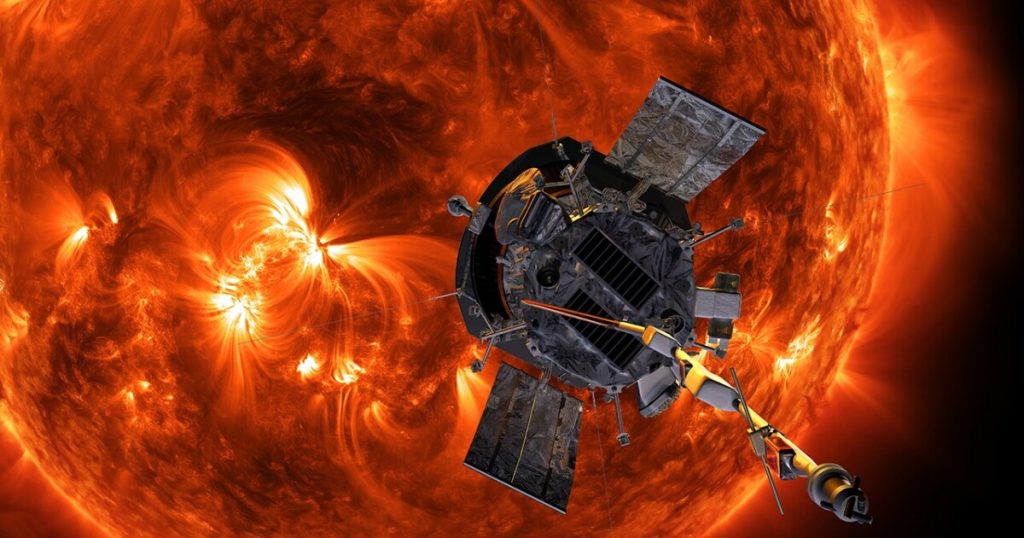After surviving its tenth close encounter with the Sun, NASA’s Parker Solar Probe set two new records. On November 21, 2021, at 4:25 am EST (08:25 GMT), the robotic deep-space explorer came within 5.3 million miles (8.5 million km) of the Sun’s surface and reached a speed of 363,660 mph (586,864 km/h), making it both the closest satellite to survive such a near pass of the Sun and the fastest-ever artificial object.
On August 12, 2018, the Parker Solar Probe was launched from Cape Canaveral Air Force Station atop a Delta IV Heavy rocket. This latest solar flyby, between November 16 and 26, marks the midway point of the spacecraft’s seven-year mission to study the Sun at such close quarters and eventually fly through the Sun’s corona.
With a top speed of 157,078 mph (252,792 km/h), Parker has overtaken the previous record holder, the Helios-2 spacecraft. This is the tenth of 24 closer orbits to the Sun using Venus’s gravitational pull in a run of seven space probes, reaching speeds of over 430,000 mph (690,000 km/h) and approaching within 4.3 million miles (6.9 million km) of our star’s surface.
The spacecraft is heavily guarded against heat and radiation. However, it is still susceptible to damage and absorbs dangerous electrical charges due to solar radiation. Hence, its orbit is highly elliptical to recover between close encounters and transmit recorded sensor data about the Sun back to Earth.
According to NASA and mission operators at the Johns Hopkins Applied Physics Laboratory in Laurel, Maryland, the spacecraft is in good form and will start transmitting data on December 24 and will expire on January 9, 2022.

